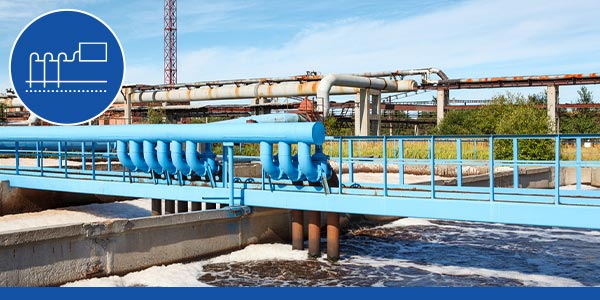Why Measure ORP in Wastewater?
ORP is essential for optimizing biological processes in wastewater treatment, particularly in systems like Sequencing Batch Reactors (SBRs) and continuous flow systems. ORP indicates whether water is in an oxidizing or reducing state by measuring its electron transfer capacity, helping operators control treatment processes such as aeration and nutrient removal.
By monitoring the ORP of wastewater, an operator can determine what biological reaction is occurring and if operational conditions should be changed to promote or prevent that reaction.
In nitrification, oxygen acts as a strong electron acceptor, generating positive ORP values, typically between +100 and +350 mV. This process helps convert ammonia (NH4+) into nitrate (NO3-), indicating that the system is in an oxidizing state. In denitrification, nitrate is the electron acceptor, with ORP values ranging from -100 to +100 mV in an anoxic environment, where oxygen is depleted.
ORP provides a broader range of information than dissolved oxygen (DO) alone. For instance, while DO can indicate the presence of oxygen, ORP gives deeper insights into the status of biological reactions, such as nitrification and denitrification. ORP can also reveal if other electron acceptors, like nitrate or sulfate, are present, offering more detailed control over the treatment process.
Monitoring ORP allows operators to determine whether the wastewater is in the oxic, anoxic, or anaerobic zones, critical for biological nutrient removal. High ORP values in the oxic zone suggest active oxidation, while lower ORP values in the anoxic or anaerobic zones indicate different processes, like denitrification or fermentation. Adjusting treatment strategies based on these values ensures that the desired reactions are taking place efficiently.

An aeration basin in a wastewater treatment plant, where ORP monitoring can help optimize biological processes.
ORP also plays a role in phosphorus removal, though phosphorus is not directly involved in redox reactions. Low ORP values in the anaerobic zone promote phosphorus release, while higher values in the aerobic zone support phosphorus uptake, allowing operators to control these processes effectively.
In short, ORP is a critical tool in wastewater treatment, providing insight into nitrification, denitrification, and other biological reactions—read ORP Management in Wastewater as an Indicator of Process Efficiency to learn more about these reactions and typical ORP values.
To learn more about ORP measurement in wastewater, check out our webinar on Monitoring Oxidation Reduction Potential in Biological Nutrient Removal or our blog post on ORP, a Versatile and Misunderstood Wastewater Treatment Parameter.
